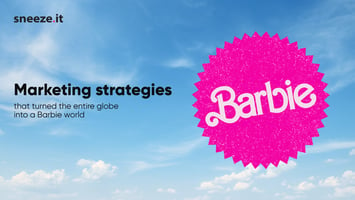As social media giants shift towards AI-based content recommendations, learn how to optimize your...
Stepping Into Success: How New Balance’s Rebrand Catalyzed Growth

New Balance, an iconic American footwear brand known for comfort and functionality, has always held a place in the hearts of athletes and casual shoe wearers alike. However, in recent years, the company has undergone a transformative rebranding that has not only revived its reputation but also propelled it into the realm of "cool". So, how did New Balance rebrand itself for success? Here's the inside story...
A Bold New Balance
New Balance's journey towards rebranding was not impulsive. It was a well-calculated and strategic maneuver driven by a need to reach a broader audience and to redefine its position in the market. The brand honed in on what they already had - a heritage of high-quality, performance-based products - but shifted the lens through which they presented themselves.
The shift involved modifying their design language to incorporate modern, fashion-forward aesthetics while maintaining their performance-first ethos. New Balance capitalized on the 'dad shoe' trend by re-issuing some of their classic, chunky silhouettes, like the 990 model. This move served dual purposes: it catered to the current fashion trends while also nostalgically harking back to the brand's roots.
Collaborations and Celebrity Endorsements
One of the most significant changes in New Balance's marketing strategy was its decision to collaborate with notable designers and influencers and securing key celebrity endorsements. From partnering with New York-based brand Aime Leon Dore to collaborations with high-profile names like Jaden Smith and Kawhi Leonard, New Balance made strategic alliances that put them back on the fashion and cultural map.
These partnerships breathed new life into the brand's offerings and image, effectively associating New Balance with cutting-edge trends, luxury, and exclusivity. Simultaneously, they managed to keep their brand accessible to their loyal customer base, ensuring the transition did not alienate their core audience.
Storytelling and Authenticity
The New Balance rebrand didn't just alter the product line; it also involved a shift in how the brand communicated with its audience. They started focusing on storytelling, emphasizing the brand's heritage, authenticity, and unique positioning as an independently owned and operated company. Their campaigns centered around individuality and nonconformity, further setting them apart from competitors.
The "Fearlessly Independent" campaign perfectly encapsulates this shift. New Balance celebrated its independence and commitment to quality, showcasing athletes and individuals who embody these values.
Sustainability and Responsibility
Aligning with the increasing consumer demand for sustainable and ethical practices, New Balance has shown commitment to environmental responsibility. They've launched a range of eco-friendly shoes and have pledged to eliminate all footwear manufacturing waste by 2025. This focus on sustainability has helped enhance their brand image and appeal to a more conscientious consumer base.
The New Balance rebrand is a testament to the power of understanding your market and adapting to its evolution. They've demonstrated that maintaining core values while embracing change can lead to resounding success. By coupling strategic partnerships with an emphasis on storytelling, authenticity, and sustainability, New Balance has stepped firmly into the future while remaining true to their past. Their journey provides a valuable case study for any brand considering a rejuvenation of its own.
Looking for more? Book a meeting below and check out our Comprehensive Guide to Digital Advertising.





